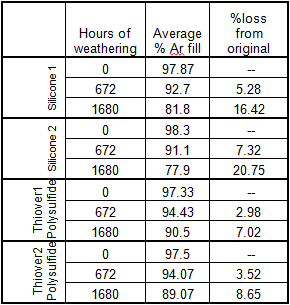Typically it is assumed by architects, designers and builders that the primary seal prevents leakage and the secondary seal holds the glass lites together, however among manufacturers it is understood that a perfect primary seal is not always feasible to attain therefore properties of the secondary seal come in to consideration at all times.
Common application defects in the primary seal are complete gaps in the PIB (image 2.2), uneven application (image 2.1) and in some cases uneven wetting out due to incomplete pressing of the units.
Albeit what seems to be a minor issue, could be a cause for serious failures as an insulating glass unit (IGU) starts to age. A study conducted by Fenzi North America highlights this issue. The improper application of PIB and the effect it has on an insulating glass unit using varying sealants was studied. Each unit that was analyzed was given a 1 cm gap in the PIB on one side of the unit to see the affect of a commonly occurring deficiency. The units were then subjected to high humidity testing where the temperatures were controlled at 60°C and relative humidity at 98%.
The table below breifs the results that were found in this study.

The results shows that polysulfide is again the better choice as a secondary sealant, with it losing less than eight percent from original over 1680 hours of high humidity and high temperature and silicone losing up to twenty percent from original in that same time span.
There are several factors that contribute to these results such as the physical gas retention properties of silicone and polysulfide which are explained in the table below

Differences in mechanical properties of the two sealants also contribute to this wide variance in performance which we will discuss in the next edition of the Newsletter.
In further editions we will discuss also about:
Moisture Vapour Transmission Rates
Ease of processing
Application











